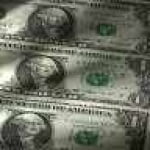Washington’s Latest Match Made In Hell
Almost Predictable
One of the more enticing things about financial markets is not that they’re predictable. Or that they’re not predictable. It’s that they’re almost predictable… or at least they seem they should be.
 For a long time people believed – and from what we read and hear, many still do – that economic cycles move in easily predictable, regular time periods. All you had to do was create a chart of the up and down waves of your favorite cycle model and extrapolate it into the future, and presto, your prediction was ready to be sold. But it turns out it is not that simple. The chart above was published by the “Inflation Survival Letter” in the late 1970s and purported to show the future trend of the so-called Kondratiev Wave, a cycle invented by Soviet economist Nikolai Kondratiev (who was eventually deported to the GULAG and killed by the Stalin regime, after a fellow American economics professor denounced him to the communists in Moscow as a “counter-revolutionary”). Interestingly, their forecast of the trend in wholesale prices turned out to be correct, but everything else they predicted in this context was incorrect. According to the K-Wave theory, the year 2000 was supposed to have been the trough of a major economic depression, with extremely high unemployment, a plunging stock market and all the other symptoms associated with a giant bust. In reality, the year 2000 was the peak of a major boom, with unemployment almost reaching a record low and stock prices soaring to unprecedented valuations. There was a time when the seeming elegance and simplicity of models like Kondratiev’s had our attention as well. There are ways of rationalizing such models.
For a long time people believed – and from what we read and hear, many still do – that economic cycles move in easily predictable, regular time periods. All you had to do was create a chart of the up and down waves of your favorite cycle model and extrapolate it into the future, and presto, your prediction was ready to be sold. But it turns out it is not that simple. The chart above was published by the “Inflation Survival Letter” in the late 1970s and purported to show the future trend of the so-called Kondratiev Wave, a cycle invented by Soviet economist Nikolai Kondratiev (who was eventually deported to the GULAG and killed by the Stalin regime, after a fellow American economics professor denounced him to the communists in Moscow as a “counter-revolutionary”). Interestingly, their forecast of the trend in wholesale prices turned out to be correct, but everything else they predicted in this context was incorrect. According to the K-Wave theory, the year 2000 was supposed to have been the trough of a major economic depression, with extremely high unemployment, a plunging stock market and all the other symptoms associated with a giant bust. In reality, the year 2000 was the peak of a major boom, with unemployment almost reaching a record low and stock prices soaring to unprecedented valuations. There was a time when the seeming elegance and simplicity of models like Kondratiev’s had our attention as well. There are ways of rationalizing such models.
…click on the above link to read the rest of the article…




 Famous stock market investment adviser Field Marshal D. Trump [PT]
Famous stock market investment adviser Field Marshal D. Trump [PT]



 Old drug warrior (otherwise recused) on his way home to Alabama…
Old drug warrior (otherwise recused) on his way home to Alabama…
 From the “displays of disbelief, revealing touching old-fashioned notions” file… [PT]
From the “displays of disbelief, revealing touching old-fashioned notions” file… [PT] Left: Charles Ponzi back in his heyday. Right: the almost free lunch, a.k.a. the no free lunch theorem ATM [PT]
Left: Charles Ponzi back in his heyday. Right: the almost free lunch, a.k.a. the no free lunch theorem ATM [PT]
 Our boy ZIRP has passed away. Mr. 2.2% effective has taken his place in the meantime. [PT]
Our boy ZIRP has passed away. Mr. 2.2% effective has taken his place in the meantime. [PT] Prosperity imbalance illustrated. The hoi-polloi may be getting restless. [PT]
Prosperity imbalance illustrated. The hoi-polloi may be getting restless. [PT]


 The “well-contained” end of the housing boom… [PT]
The “well-contained” end of the housing boom… [PT]

